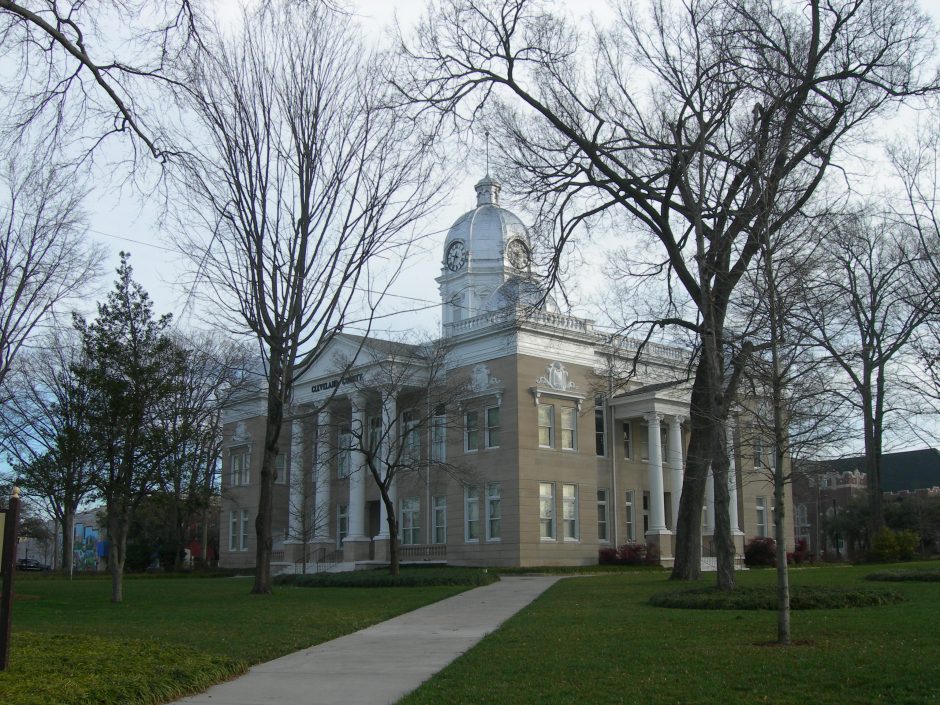Cleveland County: An Introduction

Introduction: Cleveland County is among the Charlotte region’s most beautiful counties, including the rolling countryside of what locals refer to as the “Carolina Foothills”, the rippling currents of the appropriately-named Broad River and its tributary, the Second Broad, and one of the most charming courthouse squares in all of North Carolina in Shelby. Cleveland is also conveniently-situated between three dynamic metro regions in the southeastern US, with parts of the county within 30 miles of Charlotte, 65 miles of Asheville and 30 miles of the Greenville-Spartanburg area. The county boasts one of the most civic-minded leadership cultures in the entire Charlotte region, as evidenced by such recent citizen-driven initiatives as the creation of the Broad River Greenway and several new cultural arts facilities. With these attributes, one would expect Cleveland to be a rural success story. However, the decline of the county’s traditional manufacturing base has left Cleveland with one of the region’s higher unemployment rates and a future somewhat clouded by recent economic trends. As the county looks to the future, further diversification of its economy will obviously be a top priority, but considering Cleveland’s assets, it isn’t hard to be optimistic about its chances for success.
Historical overview: An excerpt from A Guide to the Historic Architecture of Piedmont North Carolina (UNC Press), Catherine Bishir and Michael T. Southern. (p. 471)
“Cleveland Co. was formed in 1841 from parts of Lincoln and Rutherford counties and named for Benjamin Cleveland, a hero of the Battle of Kings Mountain fought just over the state line in 1890. Watered by the Broad River and its tributaries, the county was settled in the mid-18th c. by English, Scotch-Irish, and German settlers moving in from the mid-Atlantic and South Carolina. Farms and cottage industries traded downriver to Columbia and Charleston, with first tobacco and later cotton as the major cash crops. The first cotton mills were established when railroads reached the county in the 1870s, and by the early 20th c., textile manufacturing dominated the economy.”

Cleveland County today: Read the current literature associated with rural economic development and terms such as “civic leadership”, “place-based economic development”, and “community pride” feature prominently in most of the case studies. Comparing these places to Cleveland, one is surprised not to find the county listed among America’s rural success stories. Few of the Charlotte region’s more rural counties can match Cleveland’s natural and cultural assets, or its central location with interstate access to several thriving urban areas. The county’s record of civic leadership and community pride also has a long tradition that dates back to the late 19th and early 20th centuries, when the “Shelby Dynasty” of state and national leaders from Cleveland gave it unusual clout and influence for such a small, rural county. In recent years, that civic spirit has continued to find expression in such ambitious projects as the creation of a 1,500-acre greenway along the Broad River near Boiling Springs, and a growing collection of cultural facilities celebrating the county’s rich musical heritage.

The obvious question emerges: why hasn’t Cleveland County been able to capitalize on its unique advantages and realize its potential to become one of the more vibrant rural communities along the burgeoning Interstate 85 corridor between Charlotte and Atlanta? The answer is probably historical, and suggests that Cleveland may in fact be in the middle of a transitional period between an old economy overly dependent on manufacturing, and a new, more diversified one that is closely tied to nearby urban areas. Completing that transition, however, will require the steadfast commitment of Cleveland’s leadership as it works to create a new vision for the county that moves beyond an old economic era that has reigned for more than a hundred years.
Over 40% of Cleveland’s workforce is employed in manufacturing, and as that sector of the economy has declined in recent years, Cleveland’s overall economy has been especially vulnerable. As with other communities in the region, much of the lost manufacturing has been in the textile industry. Not only were cotton mills prevalent throughout the 20th century, but cotton production was truly “king” in Cleveland, which by mid-century had become one of North Carolina’s top cotton-producing counties. By the last quarter of the century, however, cotton production had declined dramatically, leading to a major period of diversification for the county’s agricultural sector. Although lagging the fate of cotton production by over twenty-five years, the manufacturing sector is now going through a similar period of decline.
What replaces that manufacturing base is still anyone’s guess, but a look at the experiences of nearby communities may offer a glimpse into Cleveland’s future. Neighboring Rutherford County, in particular, is home to several innovative efforts to capitalize on the region’s central location between Charlotte, Asheville and Greenville-Spartanburg. The Farmers Fresh Market Initiative is a creative approach to using the internet to link urban markets such as Charlotte and Asheville to Rutherford County’s growing local foods production, while Isothermal Community College’s public radio station, WNCW, has parlayed its location between three major media markets and the savvy use of the internet to create a radio brand now known nationally for its eclectic playlist and celebration of local musical traditions. While Cleveland’s own economic future may or may not tap into such regional assets as agriculture and music (though there are signs that both are gaining traction), the lesson for the county is that capitalizing on local assets and using technology to market them to nearby urban areas can be a winning strategy for this strategically-blessed part of the Charlotte region.
A greater appreciation for the Interstate 85 corridor and the economic asset it can be for the county would also be an important step forward. Perhaps because Shelby, the county’s traditional civic and commercial center, is located along US Highway 74 rather than Interstate 85, most people think of Highway 74 as Cleveland’s major highway corridor, with the exception of Kings Mountain, which has long understood the economic importance of its interstate connection. The story of successful rural economic development in America today is a narrative about communities with interstate highway connections and those without, and Cleveland would be wise to study its examples.
As noted earlier, making a major economic transition will require committed leadership, and given Cleveland County’s positive track record in this regard, it would do well to look even further south to Tupelo, Mississippi, one of the “success stories” found in all the literature about rural economic development. Comparable in size to Cleveland County and with a similar tradition of strong civic leadership, Tupelo and Lee County have transformed themselves over the past several decades from one of the South’s poorest communities into a southern economic gem. Tupelo even accomplished all this without the location advantages that Cleveland enjoys, as its closest metropolitan neighbors (Memphis and Birmingham) are over 100 miles away.
What Tupelo did, however, was develop a community-based strategy of economic development that builds on an ethic of civic leadership, private philanthropy and a celebration of place. Cleveland County has all of those ingredients, some in greater abundance than others. Civic leadership remains a strength, and in terms of celebrating place, the Cleveland County Fair has emerged as one of the best old-time county fairs to be found in the Carolina Piedmont, while Shelby rivals Salisbury in the celebration and preservation of its past. An optimistic view for the county as it struggles through one of its more difficult economic periods is that the foundational building blocks for a better future are already in place. — Jeff Michael
Photos by Nancy Pierce
Cleveland County links
Cleveland County Articles & Publications







